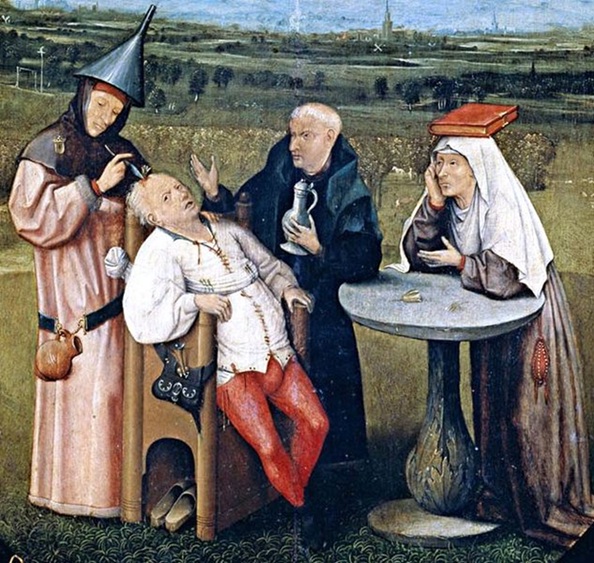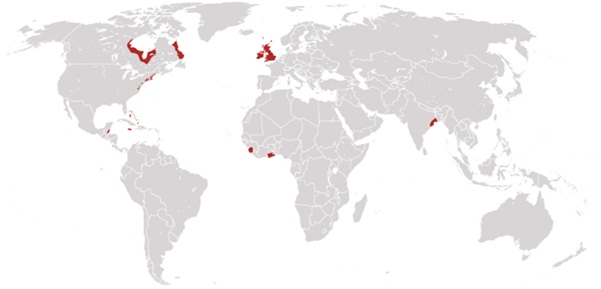|
|
|
AttitudesImho, the influence of the ‘Renaissance’ (c.1450-c.1550) is overstated. It was primarily a revolution in the arts – painting, music & drama – and its reputation was created by Renaissance people themselves, as they dissed the Middle Ages as a time of ignorance and stagnation … fake news we still believe today. HOWEVER, there were three key changes in attitudes which DID eventually change the world and medicine: 1. Authority Scholars began to do their own research, believe their own eyes, and challenge the existing authorities in Church, government, society … medicine (see Source A). This overturning of the Learning Establishment was vital to the progress of knowledge. 2. Faith England became a Protestant country in the 16th century. These changes in religion included a fundamental change in people’s faith: it was no longer the Church that got you to heaven, but your personal faith in Christ. The Church ceased to be the ultimate authority, and faith started to become about personal belief not communal control. Also, Henry VIII closed down all the monasteries, with huge consequences for society. 3. Patriarchy In wealthy or Puritan families, both mothers and daughters gained more independence and opportunities. The Civil War also saw women actively petitioning for peace and supporting political causes. Continuity: be careful not to overstate these changes. In 1700 the Church of England was still immensely influential, traditional views on women's roles persisted, and most people dared not do any other than what they were told.
|
Source A
Extraction of the Stone of Madness by Hieronymus Bosch (c.1501-5). In medieval times, madness was deemed to come from a stone in the skull, and Bosch shows a surgeon – wearing university robes and badge – trepanning the patient to cut it out. A bag of surgical instruments hangs from the chair. HOWEVER: it is the surgeon, not the patient, who is wearing the fool’s cap; on his belt moreover, he carries, not a urine flask, but a tankard – ie he is an idiot, a drunkard and a charlatan. Meanwhile the monk – who is berating the patient/victim – carries a wine-flagon; and the nun – her head literally full of book-learning – looks on, uncaring and ineffective. ie the painting is deeply iconoclastic and its message is that both Church and physicians are useless, self-serving frauds.
|
Change in the EconomyThe population of England and Wales doubled (2.5 to 5 million), caused by a decline in the death rate, especially of children (England had no food crises from 1650 to 1725) and a rise in births (due to increased prosperity). The economy grew fourfold – so fast there was not enough coin for the number of transactions! In Europe the North Sea (England + Netherlands + Baltic) surpassed the Mediterranean as the centre of trade. The sugar and tobacco trade developed with the West Indies and the North American colonies, and the East India Company was formed in 1600. By 1700 Britain was one of the most prosperous countries in the world (Source B), and London, ports & naval bases were growing rapidly. A small capitalist economy began to develop; the first joint-stock companies were set up, and ‘clothiers’ started ‘putting out’ work to people in their own homes (the ‘domestic system’). Financial institutions developed to service the growing economy – the Bank of England (1694); insurance companies (Lloyds of London was founded in 1689); private banks (Thomas Smith, a cloth merchant, opened England's first provincial bank: in Nottingham c.1650). The first banknotes appeared, solving the problem of the shortage of coin, and allowing the economy to grow as fast as it wanted. Per capita GDP doubled, and the growth in wealth by the end of the 17th century could be seen in the growth of a ‘social scene’ including theatre and coffee houses. Society changed with the appearance of a wealthy merchant class and the professions (civil servants/lawyers etc.) Continuity: note that this was NOT an industrial revolution – industry remained hand-made and muscle-powered, and England remained overwhelmingly rural … and poor compared to modern times (GDP pc was only a quarter what it would be in 1900, with a third of the population living in poverty).
|
Source BVast Trade, Rich Manufactures, mighty Wealth, universal Correspondence and happy Success has been constant Companions of England, and given us the Title of an Industrious People Daniel Defoe, Giving Alms No Charity (1704). |
GovernmentMASSIVE change; the government, a near-absolute monarchy in 1500, had evolved by 1714 into a constitutional monarchy dominated by Parliament. Thomas Hobbes’s book Leviathan (1651) rejected a theory of government imposed by ‘divine right’, in favour of a ‘social contract’ model where the people voluntarily agreed to surrender some of their freedoms to government in exchange for laws, security and protection. Local government grew stronger, with the development of JPs in rural areas and the establishment of Bridewells (prisons). Continuity: be careful not to overstate these changes. England in 1700 was far from being a democracy – a very small number of nobles and rich merchants dominated the government. Also ‘law’ was far from being as intrusive into everyday lives as it is today, and – without a functioning police force – towns were largely wild places, especially at night.
|
|
WarThe introduction of gunpowder – especially the musket and cannon – changed the nature of warfare (and wounds). Britain destroyed the French army at Blenheim (1704) and forced Spain to grant trading (and slaving) privileges in the New World (Treaty of Utrecht, 1713). By 1700, Britain had the largest navy in the world, and was beginning to build a small empire (Source C).
|
Source C
The British Empire c.1680 |
CommunicationThe first printing press in England was set up by William Caxton in 1476. Newssheets started appearing after 1640 and England’s first newspaper, the Worcester Postman, appeared in 1600. The printing press changed the world, leading to the wider, more accurate transmission of ideas and their availability to more people; this in turn led to a rise in literacy. Printed books were: • cheaper, and much more easily mass-produced than hand-copied ones • accurate (hand-copied books were full of copying errors) • much easier to read • working documents about knowledge (hand-copied books, with their illustrations and decorated initials, were ornaments and precious possessions) In the 17th century, woodblock illustrations gradually began to give way to engraving & etching illustrations onto metal plates, producing precise, high-quality images. The continued use of Latin as the international language of academia meant that ideas and discovering were shared rapidly across Europe. Seafaring made huge strides forward. The introduction of a workable astrolabe (1480s), the traverse board (to plot position, c.1500), the backstaff (1694) and the log (c.1600) significantly improved navigation. The invention of the barometer (1643) was the earliest form of weather forecasting. The triangular ‘lateen’ sail allowed ships to ‘tack’ against the wind. Rivers and canals were made navigable, providing efficient transport for bulky, low-value goods. Continuity: There were no significant improvements in road transport, and seafaring continued dangerous due to shipwreck, piracy or disease (especially scurvy) – maybe as many as one in 25 ships were lost at sea in the 17th century, more during times of war.
|
|
Science & TechnologyOnce scientists stopped believing, and started exploring, understanding of the natural world advanced rapidly – the so-called ‘Scientific Revolution’ c.1543-1687. (This, imho, was far more significant than the Renaissance.) In astronomy: in 1543, German astronomer Nicholas Copernicus showed that the sun (not the earth) was the centre of the solar system (and in 1609/19 the German Johannes Kepler defined the laws of planetary motion). In mathematics: French mathematicians Francois Viète developed algebra (1591) and worked out the formula for π (1583), John Napier invented logarithms (1614) and William Oughtred the slide rule (1630) – all allowing faster calculation. In 1556, the German metallurgist Georg Agricola coined the term 'chemistry' and scientists and alchemists started to uncover different chemicals and acids, most notably Robert Boyle, who wrote The Sceptical Chymyst (1661) and published his Law of Gases (1662). In 1660: The Royal Society was founded (from 1665 it published its Transactions – the world's first scientific journal). The end of the 17th century saw English scientists take huge steps forward in scientific knowledge. In 1687 Isaac Newton's Principia Mathematica established a new framework for understanding the physical world – including the law of gravity and the three laws of motion (1687) – which would last until Einstein’s theory of relativity (1905). Most importantly of all, scientists developed ‘Scientific Method’ – the formulation of hypotheses → experimentation → empirical observation & recording → analysis of results → multiple re-testing to confirm – and peer review.
In technology: • The first compound microscopes appeared in the 1620. • The closed thermometer (1654) allowed more accurate recording of temperature. • In 1656 the Durch engineer Christiaan Huygens invented the (much more accurate) pendulum clock. Continuity: It is worth noting that, although there were huge breakthroughs in the theory of things, they does not seem immediately to have led to significant advances in practical application/invention.
|
Consider:Studying the six 'determining factors' which affected the nature of early modern life, make a list of the key influences (eg 'seafaring'). 1. What would you say were the key differences between medieval and early modern times? 2. Explain why the role of Church in medicine decreased in importance in the years c1250–c1700. 3. Taking each of your list in turn, speculate about the effect it might have had upon the health of people in early modern times, and/or on the practice of early modern medicine (particularly on ideas about causes, treatments, surgery, and public health). (You will get to see whether your predictions were correct as you study early modern medicine.)
|
|
|
|
|
Spotted an error on this page? Broken link? Anything missing? Let me know. |
|

